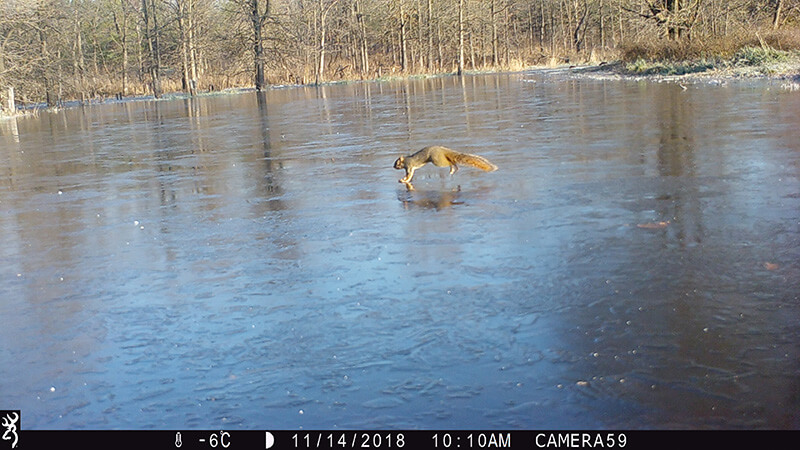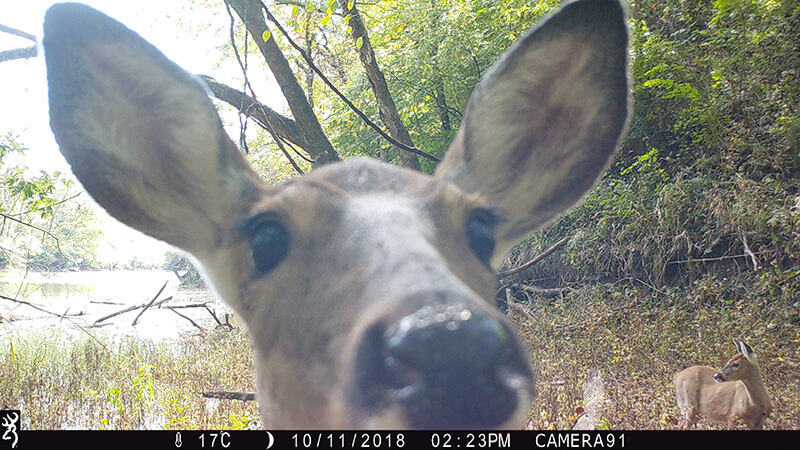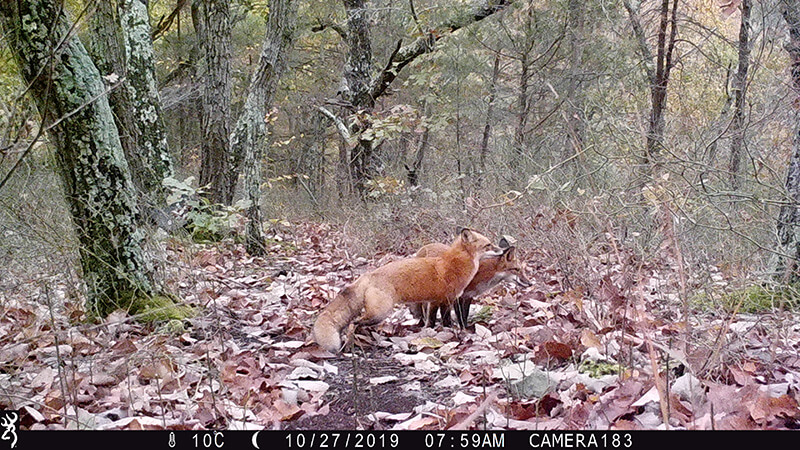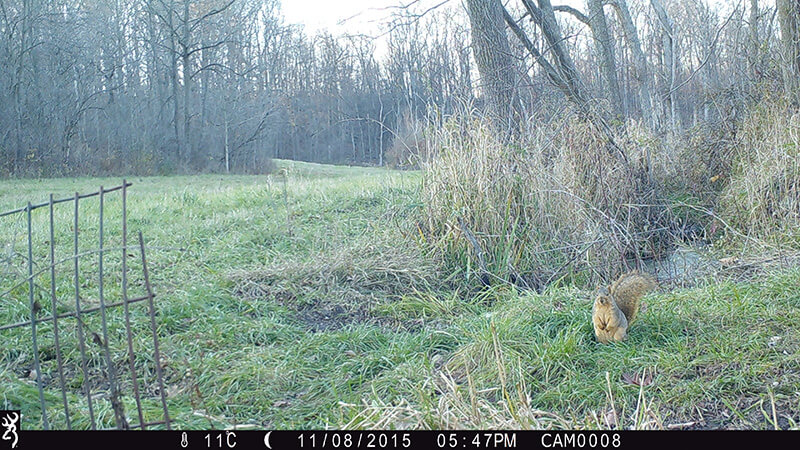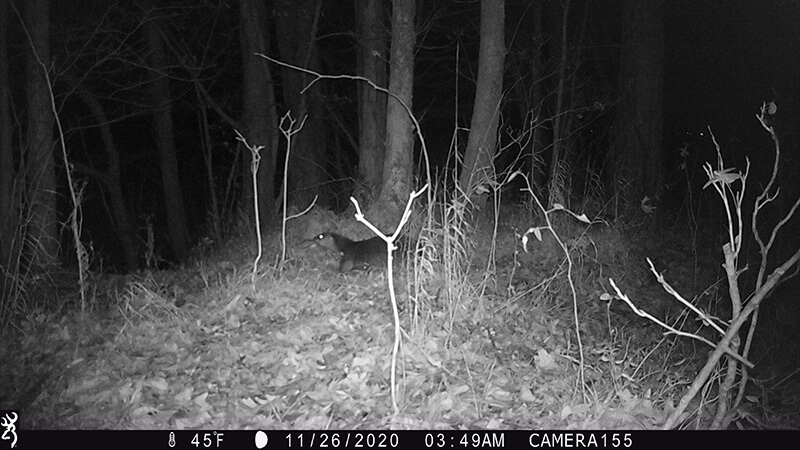Snapshot Indiana was a volunteer-based trail camera program designed to collect information about a variety of wildlife species on private property in Indiana. During the course of five years, volunteers assisted Indiana DNR by deploying trail cameras on their 10+ acre properties for a minimum of 30 days during October and November. Volunteers provided information about the location and habitat around the cameras they set. Indiana DNR staff viewed the photos and identified the wildlife species to understand what species were present on private property. This was important, as around 95% of Indiana’s land is in private ownership, and it’s difficult to get information about wildlife on these lands without help from landowners. More than 450,000 photos were collected during the five years of the program.
Thank you to the volunteers who collected trail camera photos during the program. Snapshot Indiana would not have been possible without your efforts.
Currently, Indiana DNR does not have a volunteer-based trail camera project. Those interested can find other ways to volunteer with DFW or participate in other volunteer monitoring projects. Have a mammal you think is unique on your trail camera? See if it's a species of interest and reportable on the Report a Mammal form.
About the interactive dashboard
This dashboard is best viewed on a desktop or laptop computer. It may take a few minutes to load, please be patient.

